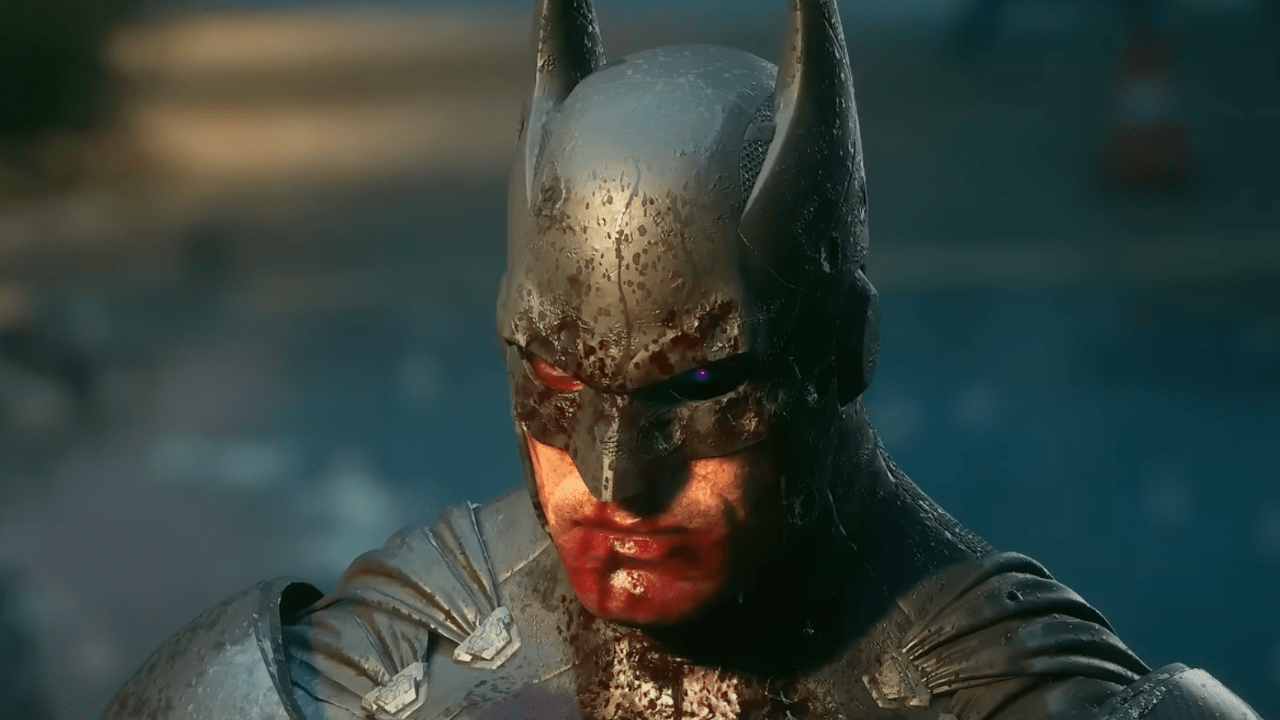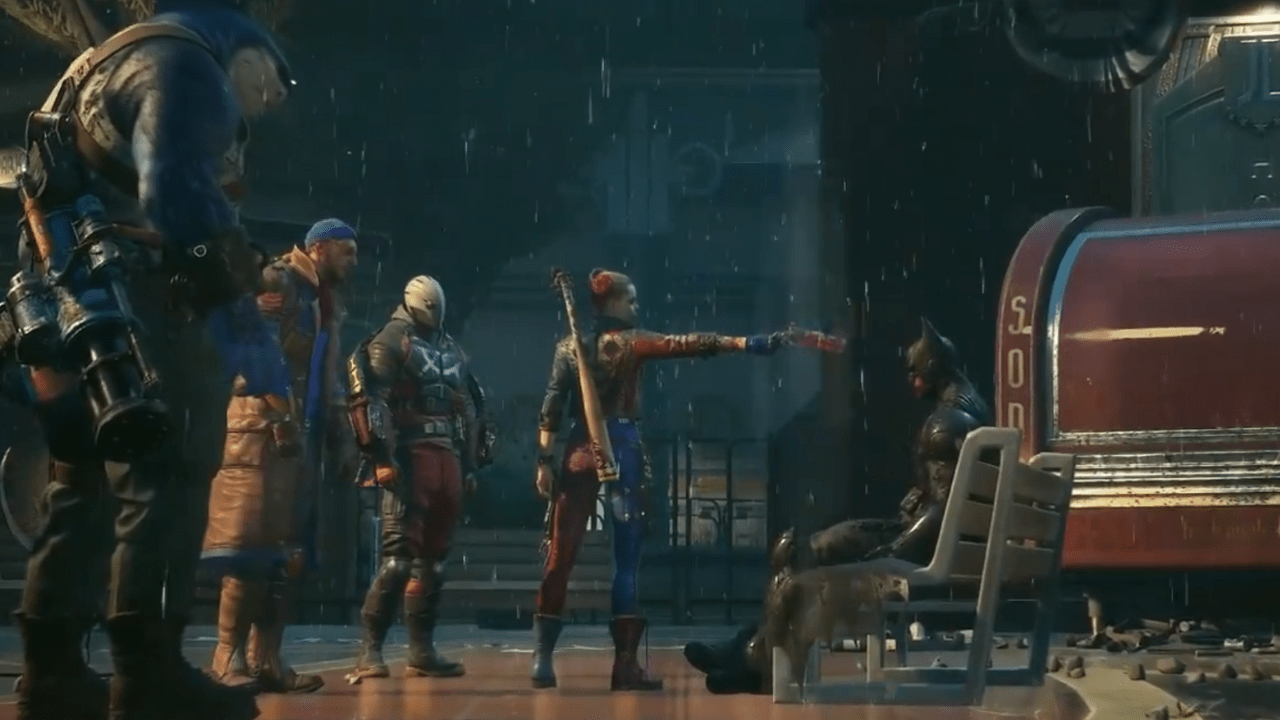
Following a challenging year marked by criticism, financial setbacks, and a significant drop in popularity, Rocksteady’s Suicide Squad: Kill the Justice League has come to an end after its disappointing live-service phase. The surprising revelation? The cherished Justice League characters, such as Kevin Conroy’s emblematic Arkham Batman, weren’t truly killed – they were replicas instead.
For fans, the response isn’t surprise or comfort; it’s annoyance. The harm is already inflicted, and this effort to rewrite history from Sweet Baby Inc., the story designers, only underscores Rocksteady’s disregard for their characters’ legacy and the anticipations of their viewers.
Batman was a clone…they were *all* clones.
They walked it all back with the last update. Suicide Squad: Kill the Justice League.
— Grummz (@Grummz) January 15, 2025
Initially, the game “Suicide Squad: Kill the Justice League” stirred up a lot of debate. The audacity of having Harley Quinn shoot Batman from the Arkham universe, who was voiced by the late Kevin Conroy, at close range, wasn’t just surprising; it seemed disrespectful to the character and the franchise. Previously, Rocksteady had been praised for their treatment of the Batman mythos, but with this game, they seem to have abandoned what made their Arkham series special, opting instead for superficial spectacle over tight storytelling, and incorporating live-service elements.
Fans had hoped that the addition of the multiverse after launch might give these characters a new lease on life, but their reintroduction failed to impress. Rather than developing a compelling narrative, the updates appeared as unconnected extras, seemingly designed to keep the dwindling audience by introducing an effeminate Joker and a Mrs. Freeze whose appearance was more reminiscent of a high school gym teacher.

In the game’s conclusion, what some might call a series of illustrated panels instead of a traditional cutscene, unveils that the Justice League members supposedly slain by The Squad were actually duplicates. This clever scheme was orchestrated by Batman to deceive Brainiac. However, this disclosure, made approximately a year following the game’s release, seems more like an act of desperation than a thoughtful plot twist. It feels as though Rocksteady is attempting to backtrack with an explanation along the lines of, “Gotcha! We didn’t mean it!” But the fans aren’t finding this amusing.
This unexpected turn doesn’t make up for the shortcomings or disregard for fan anticipations in the original campaign. It comes too late and offers too little. To add insult to injury, it turns out that Wonder Woman’s death in this campaign was not a clone; it was her true self, proving that even this revision couldn’t reverse all the negative impacts.

Regrettably, not only did the “cutscene” fall short, it wasn’t even fully animated; instead, it resembled comic book artwork due to resource constraints faced by Rocksteady, following layoffs. This lackluster effort serves as a stark reminder of the significant drop in quality from a studio that was once renowned for setting the bar high in superhero gaming. Once heralded for the cinematic excellence of the Arkham series, this same team now appears to be struggling towards the end, delivering a game that is reportedly responsible for a $200 million loss for Warner Bros.
Although some players continue to engage with the offline mode, the epic storyline seems lacking in substance now. The minimal updates in Season 4, such as the addition of medieval Elseworld maps and weapons, seem more like last-ditch efforts than genuine improvements, akin to applying a bandage to a ship that’s already sinking.
Instead of simply recounting the tale of an unsuccessful video game, this narrative serves as a warning about the consequences when a studio values fads over craftsmanship. Employing Sweet Baby Inc, famous for contentious creative choices, merely intensified the rift between the developers and their fanbase. The fans weren’t seeking a disrespectful reconstruction of their beloved characters—they yearned for the same care and reverence that was displayed in prior releases.

Currently, Rocksteady’s once unblemished reputation has been marred. The flawed nature of this game casts a dark shadow over its former brilliance. What adds to the disappointment is that it missed an opportunity to pay homage to one of Kevin Conroy’s last performances as Batman, instead leaving fans with a sour memory rather than a fitting tribute.
Ultimately, their revised storyline feels just as empty as the game it’s in. Rocksteady might believe they’ve addressed the issues, but for those of us who suffered through this rollercoaster, the harm is done and can’t be undone. We deserved a superior tale—and so did Batman.
Read More
- Forza Horizon 5 Update Available Now, Includes Several PS5-Specific Fixes
- Gold Rate Forecast
- ‘The budget card to beat right now’ — Radeon RX 9060 XT reviews are in, and it looks like a win for AMD
- Masters Toronto 2025: Everything You Need to Know
- We Loved Both of These Classic Sci-Fi Films (But They’re Pretty Much the Same Movie)
- Valorant Champions 2025: Paris Set to Host Esports’ Premier Event Across Two Iconic Venues
- Karate Kid: Legends Hits Important Global Box Office Milestone, Showing Promise Despite 59% RT Score
- Eddie Murphy Reveals the Role That Defines His Hollywood Career
- Discover the New Psion Subclasses in D&D’s Latest Unearthed Arcana!
- Street Fighter 6 Game-Key Card on Switch 2 is Considered to be a Digital Copy by Capcom
2025-01-15 16:55